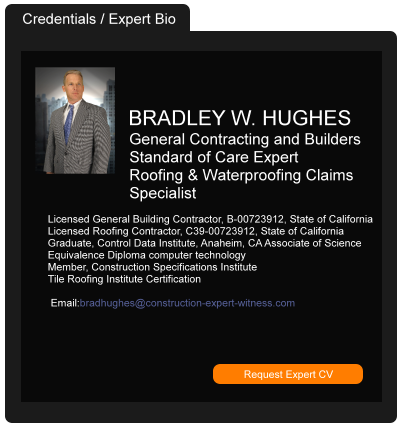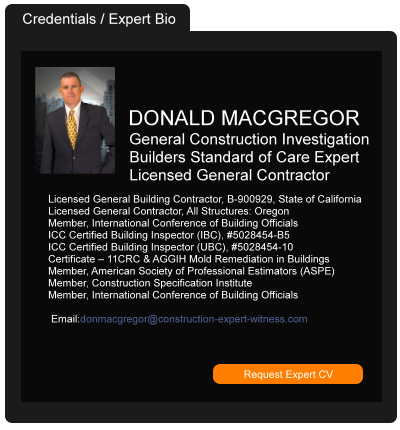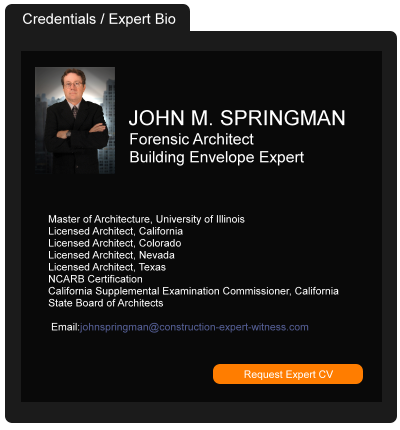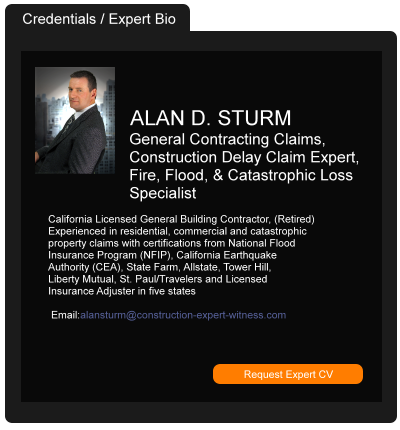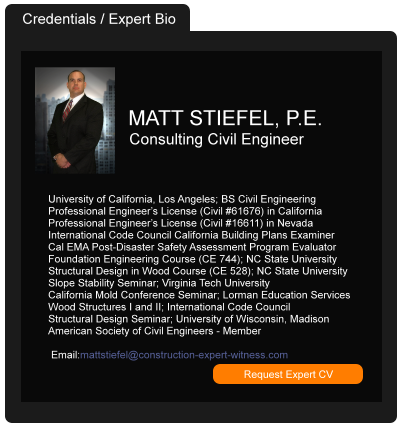Michigan Supreme Court Concludes No Statute of Repose on Breach of Contract
July 19, 2011 —
CDJ STAFFJudge Marilyn Kelly of the Michigan Supreme Court has remanded the case of Miller-Davis Co. v. Ahrens Constr. Inc. (Mich., 2011) to the Court of Appeals, after determining that the court had improperly applied the statute of repose. She reversed their judgment, pending a new trial.
�Ahrens Construction was a subcontractor, hired by Miller-Davis to build and install a natatorium room at a YMCA camp in Kalamazoo, Michigan. After its installation, the YMCA discovered a severe condensation problem, causing moisture to “rain” from the roof. The architect, testifying for Miller-Davis, alleged that the problems were due to improper installation by Ahrens. Ahrens claimed that the condensation problem was due to a design error.
�When the roof was removed and reconstructed, the moisture problem ended. Ahrens argued that the alleged defects were caused by the removal. Further, in trial Ahrens raised the issue of the statute of repose. The court found in favor of Miller-Davis and did not address the statute of repose.
�The Court of Appeals reversed the trial court, determining that the statute of repose had barred the suit. This rendered the other issues moot.
�The Michigan Supreme concluded that the issue at hand was “a suit for breach of contract,” and that the Michigan statute of repose is limited to tort actions. They remanded the case to the Court of Appeals to address the issues that had been mooted by the application of the statute of repose.
�Read the court’s decision…
Read the court decisionRead the full story...Reprinted courtesy of
Power Point Presentation on Nautilus v. Lexington Case
July 23, 2014 —
Tred R. Eyerly – Insurance Law HawaiiHere is our power point from today's presentation to the Hawaii State Bar Association's Litigation and Insurance Coverage Litigation sections. We discussed "other insurance" clauses as addressed by the Hawaii Supreme Court in Nautilus Ins. Co. v. Lexington Ins. Co., 132 Haw. 283, 321 P.3d 634 (2014).
Read the full story and view the Power Point presentation... Read the court decisionRead the full story...Reprinted courtesy of
Tred R. Eyerly, Insurance Law HawaiiMr. Eyerly may be contacted at
te@hawaiilawyer.com
General Liability Alert: A Mixed Cause of Action with Protected and Non-Protected Activity Not Subject to Anti-SLAPP Motion
February 18, 2015 —
Valerie A. Moore, Lawrence S. Zucker II and Blythe Golay – Haight Brown & Bonesteel LLPIn Baral v. Schnitt (filed 2/5/2015, No. B253620), the California Court of Appeal, Second Appellate District, held that California’s anti-SLAPP statute does not authorize the striking of allegations of protected activity in a cause of action that also contains meritorious allegations of non-protected activity not within the purview of the statute. In so holding, the court attempted to resolve, or at least add its voice to, the growing conflict among appellate districts on the issue.
A SLAPP lawsuit (Strategic Lawsuit Against Public Participation) seeks to chill or punish the exercise of constitutional rights to free speech and to petition the government for redress of grievances. California’s Legislature enacted the anti-SLAPP statute to permit a defendant to file a special motion to strike as to any cause of action that arises out of an act in furtherance of such rights. In Baral, the plaintiff alleged that his business partner had violated fiduciary duties in usurping the plaintiff’s ownership and management interests in their jointly owned company, so that the defendant could benefit from a secret sale of the company. The complaint alleged that the defendant hired a public accounting firm and prevented the plaintiff from participating in its investigation in order to force the plaintiff's cooperation of the sale of the company. The defendant filed an anti-SLAPP motion, seeking to strike all references to the accounting firm's audit. The trial court denied the motion, on the ground that the anti-SLAPP statute applies to causes of action, not allegations.
Reprinted courtesy of Haight Brown & Bonesteel LLP attorneys
Valerie A. Moore,
Lawrence S. Zucker II and
Blythe Golay
Ms. Moore may be contacted at vmoore@hbblaw.com.
Mr. Zucker may be contacted at lzucker@hbblaw.com.
Ms. Golay may be contacted at bgolay@hbblaw.com.
Read the court decisionRead the full story...Reprinted courtesy of
Cal/OSHA’s Toolbox Has Significantly Expanded: A Look At Senate Bill 606
December 13, 2021 —
Michael J. Studenka - Newmeyer DillionGovernor Gavin Newsom recently signed into law Senate Bill 606, set to take effect on January 1, 2022. With proponents of the bill citing the need to hold large employers accountable for COVID-related workplace hazards, SB 606 creates two new categories of employer violations. First, SB 606 creates a rebuttable presumption that if a type of violation is discovered at one particular worksite, Cal/OSHA can extrapolate that the violation is an “enterprise-wide” violation at all of the other company worksites. Additionally, SB 606 adds a new category of “egregious violations” to Cal/OSHA’s arsenal, adding a penalty multiplier for such violations. Finally, SB 606 increases Cal/OSHA’s investigative capabilities by authorizing Cal/OSHA to issue a subpoena to employers should they fail to “promptly provide” information requested during an investigation. As further explained below, the consequences of violating Cal/OSHA regulations has become significantly greater and more expensive, particularly for larger employers with multiple worksites.
ENTERPRISE-WIDE VIOLATIONS AND THE SEVERE REMEDIES THAT FOLLOW
Under SB 606, employers with more than one worksite will now face a rebuttable presumption that a violation at one location is actually “enterprise-wide” if either of the following are true:
- A written policy or procedure violates any Cal/OSHA standard, rule, order or regulation; OR
- Cal/OSHA finds evidence of a “pattern or practice” of the same violation being committed by the employer at one or more of its worksites.
Read the court decisionRead the full story...Reprinted courtesy of
Michael J. Studenka, Newmeyer DillionMr. Studenka may be contacted at
michael.studenka@ndlf.com
Force Majeure, Construction Delays, Labor Shortages and COVID-19
April 06, 2020 —
Elizabeth J. Dye - Gravel2Gavel Construction & Real Estate Law BlogThe global effect of the Coronavirus disease (COVID-19) is still unknown, and the progress of many large-scale construction projects has been affected by “Shelter in Place” orders, although some states and localities have classified construction projects as “essential.” Just last Friday, New York shut down all construction, with few exceptions.
Several states have enacted gathering bans of all sizes (including Michigan, Oregon, New Mexico, Washington, New York, New Jersey, Wisconsin, Illinois, Indiana, Ohio, West Virginia, California) and more people are likely to be quarantined as widespread testing becomes available. These decisions will undoubtedly affect the supply of materials and labor necessary for construction projects.
Officials have turned to increasingly disruptive and measures to control the spread of the virus in addition to event prohibitions and school closures, including restricting people to their homes, and closing businesses that are not “essential.” While many companies have adopted mandatory telecommuting, this is an impossibility on the construction sites. Eventually, supply and labor shortages due to governmental restrictions or quarantines will affect the critical path of construction projects.
Read the court decisionRead the full story...Reprinted courtesy of
Elizabeth J. Dye, PillsburyMs. Dye may be contacted at
elizabeth.dye@pillsburylaw.com
Effective July 1, 2022, Contractors Will be Liable for their Subcontractor’s Failure to Pay its Employees’ Wages and Benefits
July 25, 2022 —
Edward O. Pacer & David J. Scriven-Young - Peckar & AbramsonOn June 10, 2022, Illinois Governor J.B. Pritzker signed two House Bills that amend the Illinois Wage Payment & Collections Act, 820 ILCS 115 et. seq. (“Wage Act”), to provide greater protection for individuals working in the construction trades against wage theft in a defined class of projects. Pursuant to this new law, every general contractor, construction manager, or “primary contractor,” working on the projects included in the Bill’s purview will be liable for wages that have not been paid by a subcontractor or lower-tier subcontractor on any contract entered into after July 1, 2022, together with unpaid fringe benefits plus to attorneys’ fees and costs that are incurred by the employee in bringing an action under the Wage Act.
These amendments to the Wage Act apply to a primary contractor engaged in “erection, construction, alteration, or repair of a building structure, or other private work.” However, there are important limitations to the amendment’s applicability. The amendment does not apply to projects under contract with state or local government, or to general contractors that are parties to a collective bargaining agreement on a project where the work is being performed. Additionally, the amendment does not apply to primary contractors who are doing work with a value of less than $20,000, or work that involves only the altering or repairing of an existing single-family dwelling or single residential unit in a multi-unit building.
Reprinted courtesy of
Edward O. Pacer, Peckar & Abramson and
David J. Scriven-Young, Peckar & Abramson
Mr. Pacer may be contacted at epacer@pecklaw.com
Mr. Scriven-Young may be contacted at dscriven-young@pecklaw.com
Read the court decisionRead the full story...Reprinted courtesy of
Colorado Court of Appeals Confirms Senior Living Communities as “Residential Properties” for Purposes of the Homeowner Protection Act
November 06, 2023 —
Hal Baker - Colorado Construction Litigation BlogThe Third Division of the Colorado Court of Appeals recently interpreted the Homeowner Protection Act of 2007 (the “HPA”) in Heights Healthcare v. BCER, 2023 COA 44, decided on May 25, 2023. The Court held that a senior living community that is located on a parcel zoned “commercial” or “mixed use” constitutes “residential property” that is protected by the HPA, regardless of the zoning designation.
The claims in Heights Healthcare arose from a contract between BCER and Heights Healthcare for BCER to provide mechanical and electrical services relating to the installation of Packaged Terminal Air Conditioner units at the senior living community. The contract between the parties included a limitation of liability clause, limiting BCER’s liability to a total of $22,500 for the total cost of services rendered. After the installation, Heights Healthcare discovered that the air conditioner units were malfunctioning, causing too few of the eighty-four units to run and tripping the breaker—shutting down the entire system—when the outdoor temperature dropped too low. Following the discovery of the malfunction, Heights Healthcare filed suit against BCER for breach of contract under the Construction Defect Action Reform Act (“CDARA”).
Read the court decisionRead the full story...Reprinted courtesy of
Hal Baker, Higgins, Hopkins, McLain & Roswell, LLCMr. Baker may be contacted at
baker@hhmrlaw.com
The Trend in the Economic Loss Rule in Construction Defect Litigation
January 14, 2015 —
Beverley BevenFlorez-CDJ STAFFHeather Howell Wright of Bradley Arant Boult Cummings LLP, analyzed the Massachusetts Supreme Court decision in Wyman v. Ayer Properties, LLC, which ruled that the “economic loss rule is not applicable to the damage caused to the common areas of a condominium building as a result of the builder’s negligence.” Wright compared Wyman to last year’s Florida Supreme Court case, Tiara Condominium Association v. Marsh & McLennan Companies that decided “that the economic loss rule did not preclude a condominium association from asserting a negligence claim against a contractor for defective work.”
Wright concluded that “[t]he Wyman decision is another ruling in a growing line of cases where courts have limited application of the economic loss rule and have held that a contractor can be liable in tort for defective work.”
Read the court decisionRead the full story...Reprinted courtesy of
























































